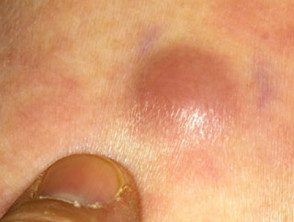What are they evil one histiocytosis?
Malignant histiocytoses are cancerous conditions in which there is no control proliferation of the histiocyte cell. They are also known as class III histocytosis.
Malignant histiocytoses include the following different diseases:
- Monocytic leukemia
- Evil one histiocytosis
- True histiocytic lymphoma
In all these conditions histiocytes it spread throughout the body; usually affects the liver, spleen, lymph nodes and bone marrow (inside the bone where blood is made). Malignant histiocytoses can also affect other organs, including the skin.
Malignant histiocytoses are diagnosed by blood tests, tests on the bone marrow (bone marrow Aspire and biopsy) and tissue biopsies.
Monocytic leukemia
Monocytic leukemia presents with unexpected abnormalities found in blood tests or with generalized symptoms of fatigue, weight loss, easy bruising, recurrent infections, lumps on the skin (leukemia skin) and swollen gums (gingival hyperplasia)
Monocytic leukemia

Leukemia skin

Leukemia skin
Malignant histiocytosis
Malignant histiocytosis presents with a sudden onset of generalized symptoms such as fever, sweating, weight loss, and enlarged lymph nodes (better sense in the neck, armpits, and groin), and enlarged liver and spleen. Other cells in the blood may decrease resulting in anemia, low platelets (cells involved in blood clotting) and low white blood cells (infection-combat cells).
Half of those affected will have other organs, usually skin, bone, or intestine.
- Skin involvement usually takes the form of multiple purple or skin-colored bumps, which can ulcerate.
- Bone involvement causes holes in the bones and an increase in calcium levels in the blood. These holes can be seen on x-rays.
- Intestinal involvement is often not noticeable until the lumps in the intestine have become very large, causing obstruction or bleeding.
True histiocytic lymphoma
True histiocytic lymphoma presents with a located a lump that may be in the lymph glands or another organ; usually the skin, bone or intestine. It remains localized in one area for some time, and can grow quite large in that area. Later, it can spread throughout the body, involving many organs as in malignant histiocytosis.
Which is the treatment?
Most patients with these cancerous forms of histiocytosis respond to treatment with chemotherapy or radiotherapy. Malignant histiocytosis progresses very rapidly and treatment should be started as soon as possible. Some people will not respond to treatment and others will die before the condition can be diagnosed and treated.
